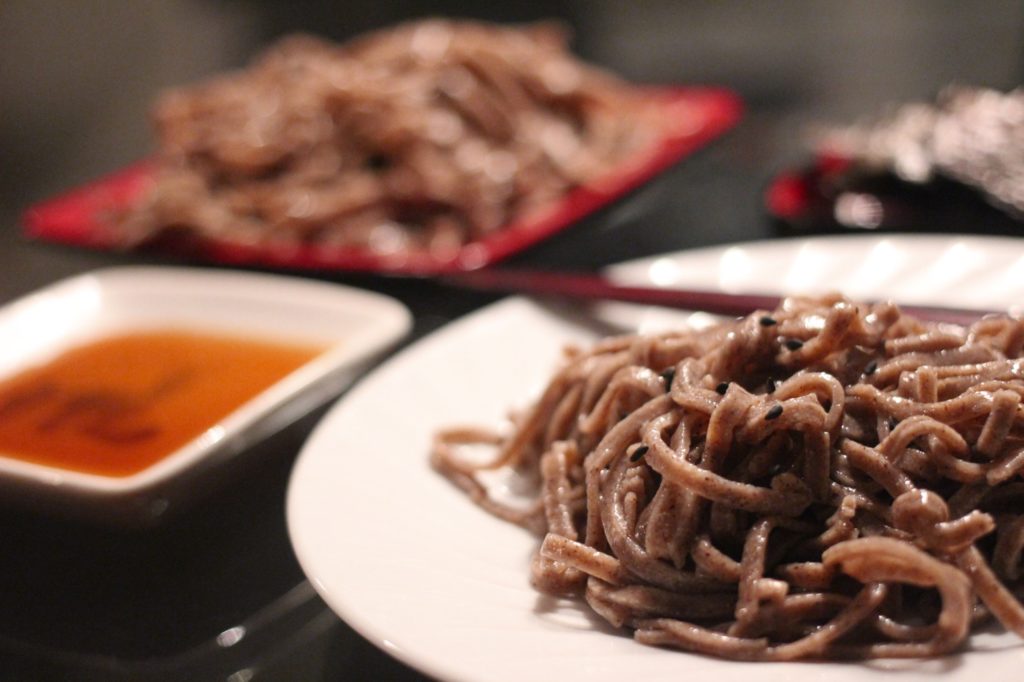
Unfortunately, I watched this after making my own noodles. Fortunately, I had a pasta maker. What that meant was that the noodles looked awesome but were horribly over-mixed and dense. The process was relatively easy (no years of apprenticeship involved like above), but the cleanup was long because about half the dough got stuck in the machine and wouldn’t extrude. The buckwheat I used was also very bland. I’m not sure if it was too unrefined.
You don’t add salt to buckwheat noodles, so the noodles themselves need to be very savoury. Traditionally, soba is eaten at room temperature (you blanched it ice cold water after cooking – see above) and served with a soy-, seaweed- and bonito flake-based broth that’s a mother stock of Japanese cooking.
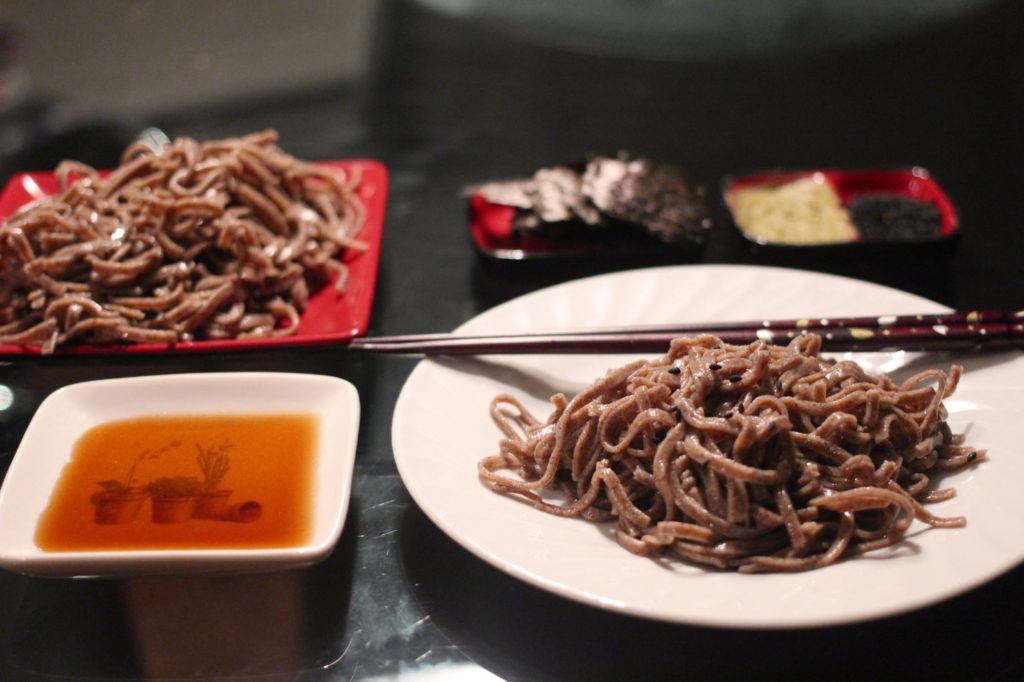
Unlike the master above, I chucked my sieved organic buckwheat flour into a bowl with some water and then into the electric pasta maker with the vermicelli attachment. There was no soba noodle extrusion option…an Italian pasta maker oversight, clearly.
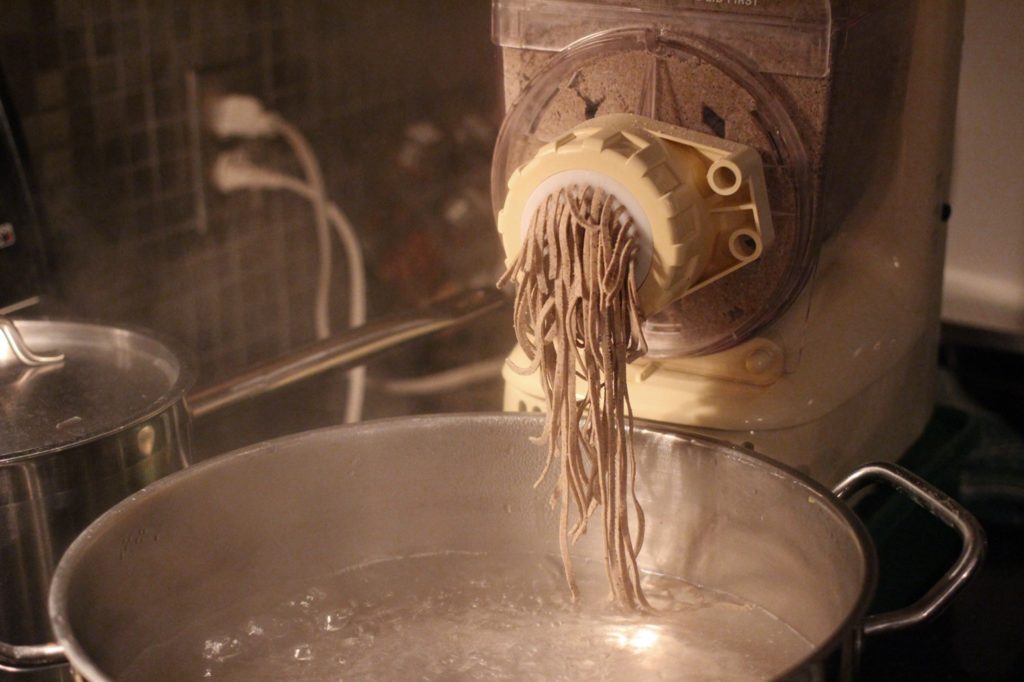
So here are my pretty photos, and if you have an electric pasta maker, by all means, try to make your own soba with it. But good luck not over-kneading it. You need the right ratio of flour to water or it’ll stick to the machine or extrude all pasty. And when you get the right ratio, it’s dense and doesn’t want to come out.
I did extrude and cut the noodles directly into the pot, though, which I think was smart because it didn’t give the noodles a chance to re-stick together or to a plate or counter.
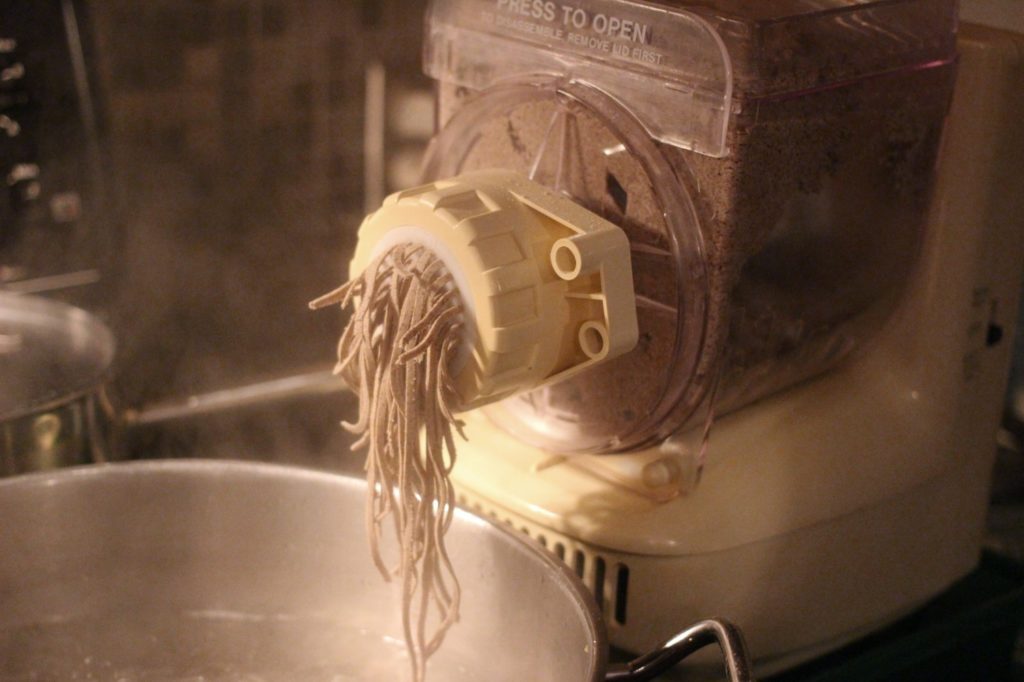
Maybe in my next life I will be a soba-making apprentice. I feel as though that would be karmic justice for my failure in this life to make amazing noodles.
RECIPE:
I followed this recipe but replaced the wheat flour with buckwheat. Measure everything!
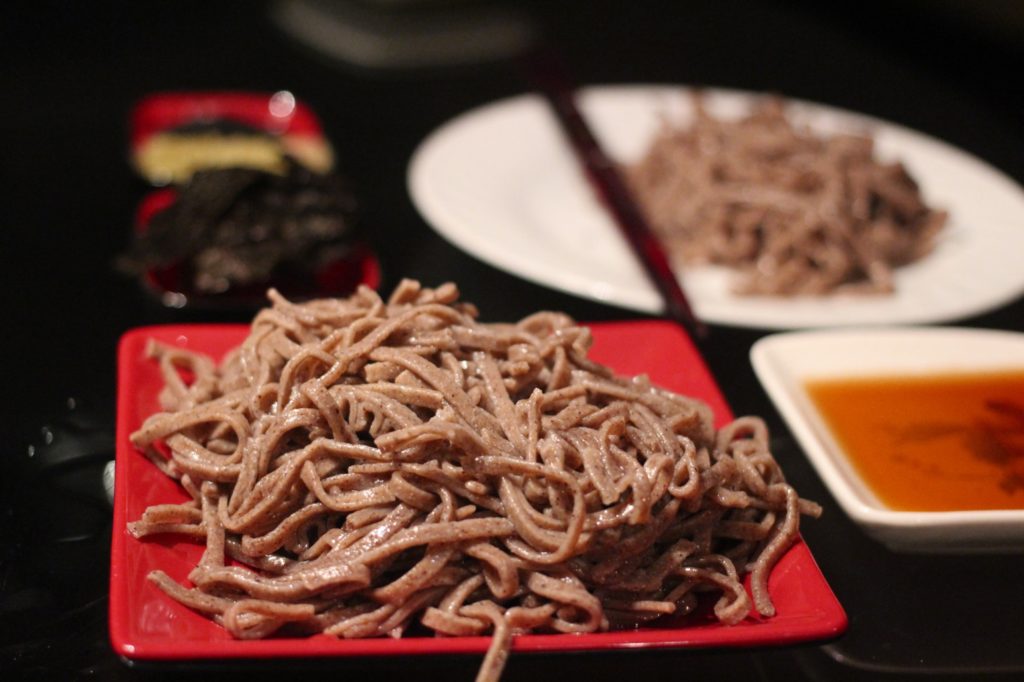
Leave a Reply